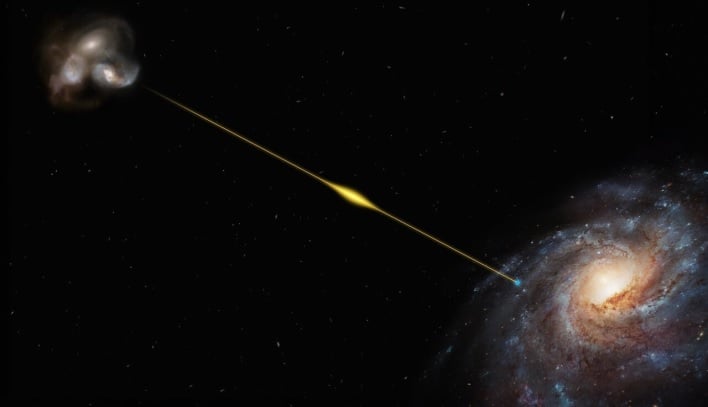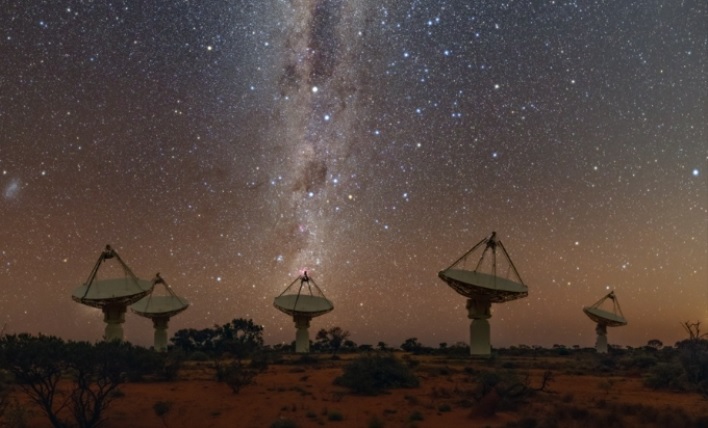Astronomers Detect A Mysterious Radio Burst That Took 8 Billion Years To Reach Earth

FRBs are extraordinary events that generate as much energy in a thousandth of a second as the Sun does in a year. Because they also disappear in the blink of an eye, they are exceptionally hard to detect and when they do, astronomers have a tough time tracking where they came from. All of this makes the detection of FRB 20220610A, and the fact that a team of astronomers were able to track the FRB back to its source, even more incredible.
"Using AKKAP's array of dishes, we were able to determine precisely where the burst came from," remarked Stuart Ryder, an astronomer from Macquarie University in Australia and the co-lead author of the study published in the journal Science. "Then we used [ESO's VLT] in Chile to search for the source galaxy, finding it to be older and further away than any other FRB source found to date and likely within a small group of merging galaxies."

The FRB was detected on June 10, 2022, and the team says it was created in a cosmic event that released, in milliseconds, the equivalent of our Sun's total emission over 30 years. ASKAP was used to determine the origin of the FRB precisely, and the Very Large Telescope (VLT) helped the team search for the host galaxy.
SKAO Postdoctoral Fellow Hao Qiu remarked, "Radio observations give us key information that allows us to measure the turbulent magnetized interstellar and intergalactic medium between us and the host galaxy." Qui added, "Optical observations play a complementary role by enabling us to identify the distance of the host galaxy and learn more about the host and foreground environment along the line of sight. Comparing the radio and optical data allows us to test cosmological models of the intergalactic medium and better understand what could create these bursts."
Ryan Shannon, co-author of the paper, explained that they still don't know what causes these massive bursts of energy. He says that the paper confirms that FRBs are common events in the cosmos and that in the future they will be able to be used to detect matter between galaxies, and eventually gain a better understanding of the structure of the Universe.

